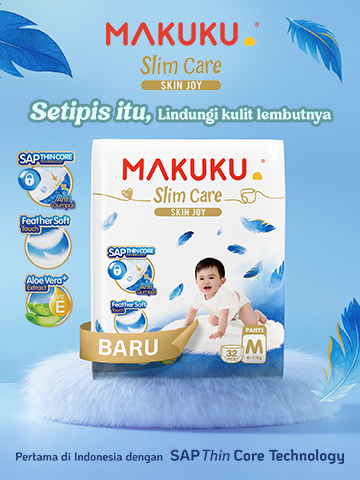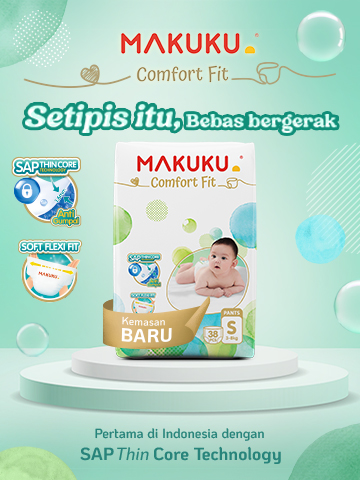
Moms, your little one's skin is still sensitive, making it easily susceptible to germs. One common skin condition that often affects children is impetigo, a contagious infection characterized by red spots and blisters on the skin. This condition usually appears when the child's immune system is weak, making them more vulnerable to skin diseases. Biasanya, penyakit ini muncul ketika imun si kecil sedang lemah, sehingga rentan terserang penyakit kulit.
Impetigo is not a serious condition, but the spread of this disease can occur very easily. Impetigo in children is prone to occur when their skin is already irritated by other issues, such as eczema, poison ivy, insect bites, cuts, and scratches.
Understanding Impetigo in Children
Impetigo, or this skin infection, occurs in children aged 2-5 years, but it can also affect infants to adults. Impetigo can attack healthy skin (primary impetigo) or be triggered by pre-existing skin problems (secondary impetigo), such as eczema/atopic dermatitis. Transmission of impetigo can occur through direct contact or sharing items with the infected person.
The origin of the word "impetigo" comes from Latin, specifically from the word "impetere," which means "to attack" or "to seize." This term is used to describe a contagious skin disease that often appears suddenly and can quickly affect someone. This disease was first described in medical literature by an ancient Greek physician named Hippocrates.
Causes of Impetigo in Children
The main cause of impetigo in children is a bacterial infection. The bacteria that cause impetigo thrive in hot and humid conditions. This is what triggers impetigo to occur in Indonesia all year round. And, of course, it is different from other countries that have four seasons.
In addition to bacterial infections, several factors can also increase a person's risk of contracting impetigo, including:
- The age factor where impetigo often occurs in children aged 2.5 years
- Impetigo increases in individuals living in areas with a tropical climate like Indonesia.
- Someone with a history of skin problems such as scabies infection that damages the skin is at higher risk of developing impetigo.
- Engaging in activities that are close and in direct contact with individuals with impetigo facilitates transmission through crowds.
Impetigo Symptoms
Unfortunately, the symptoms of impetigo do not appear immediately after the patient is infected. Generally, these symptoms appear 4-10 days after the patient is first exposed to the bacteria. Meanwhile, the complaints of impetigo vary for each person depending on the type of impetigo experienced. Here are the symptoms of impetigo based on its type:
Symptoms of crusted impetigo
Crusted impetigo is the most common type of impetigo experienced by children. This type of impetigo is highly contagious to others. The symptoms of crusted impetigo include the appearance of reddish spots accompanied by itching around the mouth and nose, but without pain. The sores on the spots on the skin result from scratching, leading to irritation of the skin around the wounds.
Symptoms of bullous impetigo
Unlike crusted impetigo, this type of impetigo is more serious. Symptoms of bullous impetigo include fever, swollen lumps around the neck due to lymph node enlargement, blisters filled with clear fluid on the skin, as well as pain and itching in the blistered area. If these blisters rupture, the fluid can spread and form yellowish scabs that will disappear within a few days.
Complications of Impetigo
Impetigo is indeed considered a non-dangerous disease. Blisters that burst will heal without leaving scars if the infection is mild. However, moms and dads should not ignore this condition. Because impetigo can cause several complications as follows:
Scar tissue
Blisters on the skin due to impetigo are very prone to rupture if scratched or rubbed. These impetigo blisters will not leave scars like chickenpox blisters. However, if the impetigo sores are severe and do not receive proper treatment, they can trigger the formation of scar tissue or keloids.
Ektima
Impetigo that does not receive proper treatment will worsen and cause complications such as ecthyma. Ecthyma is a more severe type of infection. This is because ecthyma attacks the inner layers of the skin, whereas impetigo only occurs on the outermost layer of the skin.
Cellulitis
This complication also occurs in the tissues beneath the skin. In fact, cellulitis can spread more easily to the lymph nodes and bloodstream. If this happens, the infection may cause fever and body pain.
Kidney problems
Although rare, impetigo can cause kidney problems. Types of kidney issues such as kidney failure and kidney damage are usually caused by streptococcus infections. This condition can lead to inflammation that enters the bloodstream up to the glomeruli.
Impetigo Treatment
When your little one experiences impetigo, moms and dads should not panic. Impetigo can be treated with antibiotic ointment or cream such as mupirocin if the infection is mild and has not spread too widely throughout the body.
The method is simple: just apply ointment or cream to the infected area. Before applying, it is advisable to clean the wound by soaking it in warm water or compressing it first.
After the dry skin on the wound peels off, apply the medication. This is intended to ensure that the medication can be absorbed into the skin properly. If external treatment has been done but the impetigo does not heal, the child may need to take antibiotic medication.
Impetigo Prevention
Impetigo is a contagious skin disease that can spread to different areas of the body as well as to other people. To prevent impetigo from spreading to others, it is best to avoid sharing personal items with an infected person, such as clothing, towels, or even other objects that have been touched and contaminated.
Also avoid direct contact between the skin and someone with impetigo, especially if the impetigo sores are still open and have not dried or been treated with antibiotics for 24-48 hours. Additionally, always ensure to maintain personal hygiene, treat wounds, and regularly wash hands. Also, make sure not to borrow personal items from others.
Impetigo is a skin disease that occurs in children aged 2-5 years. Impetigo in children is not dangerous but should not be underestimated. Proper treatment and preventive measures can prevent impetigo in children. Always maintain cleanliness, moms and dads!








